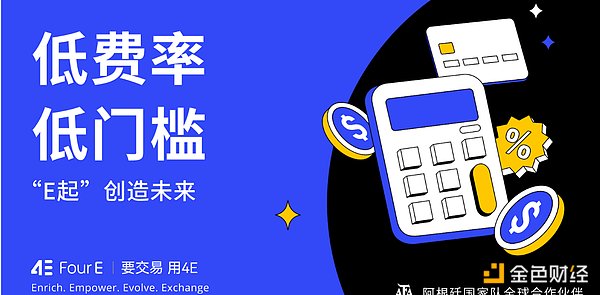On August 5, the global financial market experienced unprecedented volatility, from the stock market to the cryptocurrency market to the foreign exchange market. From the US version of the "Battle Royale" last Friday to the "Black Monday" in the Asia-Pacific market, the confidence of global investors was generally frustrated.

Friday Battle Royale
Last week, after the Federal Reserve chose not to cut interest rates on Wednesday, the economic and employment data subsequently released by the United States aroused investors' pessimism. The non-farm payrolls data in July was weak, and the unemployment rate rose further. This was also the worst non-farm data since the epidemic. Investors' concerns about the US economic recession have risen sharply, triggering large-scale risk aversion. The three major US stock indexes fell, with the S&P 500 index closing down 1.84%, the Dow Jones Industrial Average also down 1.51%, and the Nasdaq fell 2.4%. The market value of the seven US technology giants has evaporated a staggering $2.3 trillion since its peak in early July.
Meanwhile, Japanese stocks have taken the lead in the collapse during Friday's Asian trading session. Affected by investors' concerns about a US recession, the Bank of Japan's interest rate hikes and the appreciation of the yen, the Nikkei 225 index closed down nearly 6%, the biggest single-day drop since 2016.

Black Monday
After two days of market closure over the weekend and fermenting emotions, the global stock market sell-off intensified on Monday, spreading from the US version of the "Battle Royale" last Friday to the "Black Monday" in the Asia-Pacific market, and the global financial market collapsed.
After a sharp drop of nearly 6% last Friday, the Nikkei 225 index plunged again by 12.4% on Monday, marking the largest single-day drop in history. Nikkei 225 volatility futures were suspended for the second time during this trading session due to the triggering of the circuit breaker mechanism; the South Korean AEM index fell by 14%, triggering the circuit breaker mechanism, which was the largest single-day drop.
In addition, European stock index futures fell sharply, with Germany's DAX index futures down 1.03%, France's CAC40 index futures down 1.7%, Europe's STOXX 50 index futures down 1%, and Britain's FTSE 100 index futures down 0.5%.
Cryptocurrencies were not immune to the impact and followed the decline due to the risk aversion in the global market. Bitcoin fell below the $50,000 mark, down about 15% on the day, and Ethereum fell 23%, causing the market to wail.

Global carry trade “clean-up” exacerbates market turmoil
The yen carry trade has long supported the global bull market because it enables cheap borrowing to be invested elsewhere. Last Wednesday, the Bank of Japan officially raised interest rates by 15 basis points, far exceeding market expectations, and the exchange rate between the dollar and the yen quickly rose from 160 to 143. As the world's most common financing currency, the retaliatory appreciation of the yen in a short period of time has triggered a "big liquidation" of global carry trades, triggering a wide range of linkage effects, affecting not only dollar assets, but also other non-US currencies, pushing them to appreciate against the dollar, exacerbating the volatility of global financial markets.
As the world's largest carry currency, the changes in the Japanese yen's interest rate policy have had a profound impact on the global financial market. For a long time, the Japanese yen has become the first choice for international capital seeking high-yield financing due to its ultra-low interest rates. Investors generally borrow Japanese yen at very low costs and invest in high-yield US dollar assets such as US bonds or US stocks, cryptocurrencies, or bonds, deposits or other assets in other high-yield currency countries to earn interest rate spreads. However, last Wednesday, the Bank of Japan suddenly announced a 15 basis point interest rate hike. This decision broke the market's original expectations and caused the yen to appreciate rapidly in a short period of time.

For many traders, if they previously financed with cheap yen and invested in high-interest markets to earn high returns, they now have to pay for both the decline in high-yield assets (such as U.S. stocks) and the appreciation of the yen exchange rate (the yen needs to be returned at the end of the transaction). This amazing reversal has triggered a "big liquidation" of global carry trades. Investors have to sell U.S. dollar assets and buy back yen to repay yen debts, which in turn intensifies the selling pressure of U.S. dollar assets, causing the prices of financial assets such as U.S. stocks to continue to fall. At the same time, due to the liquidation of carry trades, a large amount of funds flowed back to Japan, further pushing up the yen exchange rate, bringing more pressure to close yen positions, forming a vicious cycle.
After the global financial market experienced this violent turbulence, investors have been looking for more flexible and efficient trading tools to cope with market uncertainties. 4E platform stands out with its excellent trading performance and professional services, becoming the trusted choice of many investors. 4E platform not only supports 100x leverage long and short trading of many indices including Nikkei Index, but also provides 1,000x leverage long and short trading services for mainstream foreign exchange such as yen, US dollar, euro, pound sterling, etc., allowing investors to flexibly respond to market fluctuations and capture investment opportunities.







